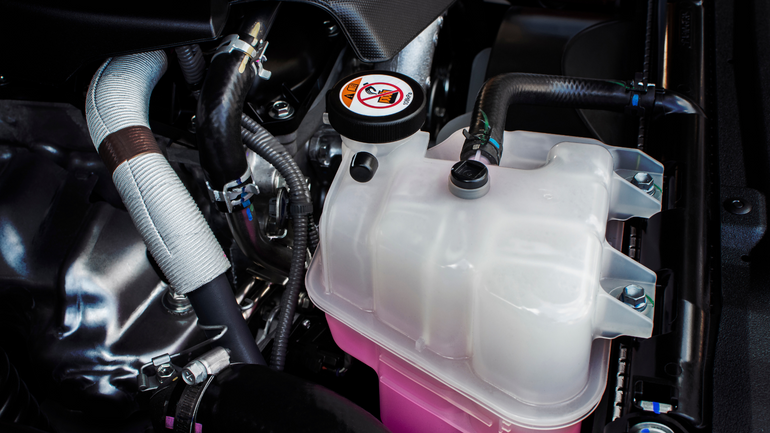It's common for car owners to come across a coolant overflow tank. If you're unfamiliar, it's the clear plastic container located near your engine that usually has a radiator cap on top of it. How does this seemingly small component work? In this blog post, we will explore the inner workings of a coolant overflow tank, including what it does, how it works, and why it's important. We'll also discuss additional steps you can take to ensure your vehicle stays in good condition and runs efficiently. So if you've ever wondered how coolant overflow tanks keep things running smoothly under the hood, read on to learn more!

What is a Coolant Overflow Tank
The coolant overflow tank is a key component of any car's cooling system. It is designed to hold excess coolant that is not needed by the engine and prevents it from entering the atmosphere. The overflow tank also helps to maintain the correct level of coolant in the radiator.
When the engine is cold, the coolant level in the overflow tank is at its lowest point. As the engine warms up, the coolant expands and rises in the overflow tank. When the engine is hot, the coolant level in the overflow tank is at its highest point.
If there is a leak in the cooling system, coolant will escape from the radiator and into the overflow tank. This will cause the coolant level in the radiator to drop, and can eventually lead to engine overheating if not corrected.
The overflow tank usually has a cap with a pressure relief valve. This valve opens when the pressure introduce coolant overflow tank
How Does Coolant Overflow Tank Work works?
A coolant overflow tank is a simple device that helps to keep your car's cooling system in good working order. The tank is attached to the engine, and it holds a small amount of coolant. As the engine heats up, the coolant expands and is forced into the overflow tank. When the engine cools down, the coolant contracts and is drawn back into the radiator.
The overflow tank serves two purposes.
First, it allows the coolant to expand without putting too much pressure on the radiator cap. This can prevent the radiator from leaking or bursting.
Second, it provides a place for the coolant to go when the engine is turned off. Otherwise, the coolant would just sit in the radiator and eventually boil over when the engine was started again.
Coolant Overflow Tank benefits
A coolant overflow tank is a great way to keep your engine cool. The benefits of a coolant overflow tank are:
- Allow the engine to maintain a consistent temperature.
- Prevent the engine from overheating.
- Help the engine to run smoother.
- Prolong the life of the engine.
How to install a coolant overflow tank
A coolant overflow tank is a great way to keep your car's coolant levels topped off and prevent overheating. Here's how to install one:
- Find a suitable location for the overflow tank. It should be close to the radiator so that the hose connecting the two doesn't have to travel far.
- Mount the overflow tank in place using bolts or screws. Make sure it is secure so that it doesn't come loose while you're driving.
- Run the hose from the radiator to the overflow tank. You may need to cut the hose to length, but make sure there are no leaks before proceeding.
- Fill up the overflow tank with coolant until it reaches the "full" line. Now your car's cooling system is topped off and ready to go!

Conclusion
Now we all know that a coolant overflow tank is an important component of any cooling system. It ensures that your engine systems do not overheat and keeps the temperature in check by releasing excess pressure when necessary. Understanding how it works and making sure that it's properly maintained can help you avoid serious issues with your engine due to overheating or insufficient fluid levels. Regularly checking and topping up the coolant level in your car will ensure that your vehicle stays running optimally for many years to come!
Read More
- How to Choose the Perfect Armrest Cover for Your Car? – Labworkauto
- Recognizing Car Light Failure: Safely Responding to Emergencies While Driving – Labworkauto
- Custom Grille: Everything You Need to Know About Bumper Grille – Labworkauto
- How to Choose the Perfect Seat Cover for Your Car? – Labworkauto
- The Ultimate Guide to Choose a Boat Cover in 2023 – Labworkauto





























